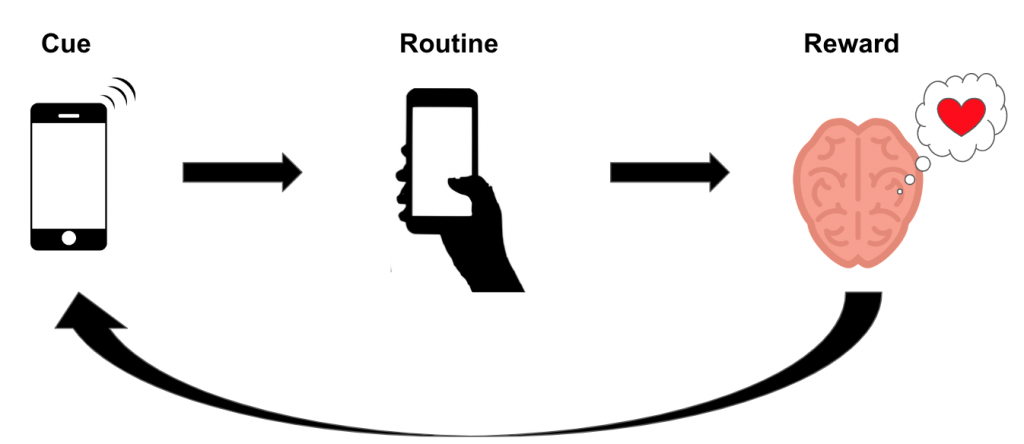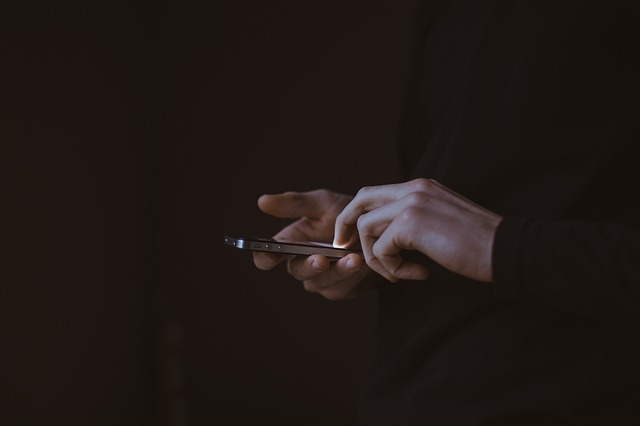You may or may not have read my previous blog post on the seenzone and electronic intrusion (EI). If you haven’t, you can take a peek here.
If you did read my post, you might be asking “What exactly is happening to my brain that makes me want to commit EI?”.
Welp my friend, it’s time to get scientific.
*Puts on sterile rubber gloves*
Today I’ll attempt to unpack this question through some fundamental theories in psychology. Let’s take a look at Behaviourism by touching on operant/classical conditioning and reinforcement. (You may remember these theories from your high school Psychology classes).
Let’s look a bit more closely at positive reinforcement.
Positive reinforcement
Wu (2017) informs us that our brain’s reward centres are quite active during each of the three stages of love. Every time you receive a message from your crush, a little magical hit of (insert relevant chemicals via table 1 here) is released in your brain, strengthening your behaviours. Mix that with sexting, and you’ve got yourself a cocktail of feel good chemicals.
Table 1 by Tito Adhikary (CC BY-NC-SA 4.0)
Schedules of reinforcement
There are many different schedules (rates at which they occur) and I certainly don’t want to bore you a boat load of text. If you’re curious, you can watch the video below.
Today we’ll focus on…
Variable ratio and variable interval
Ferster and Skinner (1957, p.326) confirm that a “variable-interval (VI) schedule is one in which the intervals between reinforcements vary in a random or nearly random order”.
“In a variable-ratio (VR) schedule of reinforcement the reinforcement occurs after a given number of responses, the number varying unpredictably from reinforcement to reinforcement.”(Ferster et al.1957, p.396).
And this handy little diagram tells us that both approaches are most effective (long term and short term) in producing a desired response. Much like slot machines, the unpredictability is rampant and it soon makes us crave the reward.
So where am I going with all of this?
Welp, your crush (unknowingly) might be sending you messages at a variable ratio or variable interval rate – making you desperately crave your next ‘hit’ (*cough* I mean, er, message).
The habit loop

As mentioned in my last blog post, if the loop is repeated enough times, your reward centres will activate before the reward is released, during the ‘cue’ stage (Smart by Design, 2017).
I would even go as so far to say that those little message typing bubbles are another form of cue.
But what happens when the messages dry up?
The dreaded message drought

The seenzone is a scary place because if you don’t have will power, you might go searching for that chemical hit yourself. It may sound extreme, but if you let it affect you, you’re quite comparable to a gambler that is waiting for their next ‘big win’.
How could that manifest? What types of behaviours might you undertake or already be undertaking?
Here’s a couple that came to mind (feel free to leave others in the comment section and I’ll add it in):
- Electronically (or physically) intrude on your crush’s life
- Seeking reassurance for your anxiety by digging around for facts.
- Tailoring a social media post/story of yourself as a targeted FOMO hook for your crush. ‘I’m having such a great time at (insert event here)’ (More to come on this in a follow up post)
- Medicating to numb the pain
- Eating delicious food
- Drinking alcohol
- Taking illicit substances
- Engaging in casual sex
- Re-downloading Tinder for those sweet sweet likes (external validation)
- Delusions of grandeur, fantasising about the ‘good times’ you had with this person – even if they’re not the most upstanding human being.
- Irritability. Lashing out at your friends and family. (Drug withdrawals, a.k.a ‘comedown’).
- Being overwhelmed with emotions. Especially sadness and grief.
- Catastrophising. Thinking of the worst situation possible. “They don’t like me”.
- And last but not least, bombarding your crush with your anxiety in passive and…not so passive ways. ‘I miss you’, ‘Want to catch up soon?’, ‘Are you ignoring me?’,’Why don’t you message back?’ ‘Do you still like me?’ ‘Are you seeing someone else?’
If you’ve felt this way before, don’t judge yourself, we’ve all been there. Withdrawals from (insert cocktail of chemicals from Table 1 here) suck.
Previous generations never had to go through this quite intensely. They (unlike us) had to physically wait by the house phone for a call. Often preventing them from participating in life – which wasn’t always feasible. They may not have even had an answering machine. (Dark days, am I right?). They weren’t taunted with (or the choice to taunt themselves with) recent images of their crush’s life events/social interactions.
What now?
Now that you know what is happening in your brain with enough self awareness you can seperate yourself from your obsession and overcome it.

You’ve got a couple of options, you could choose to completely cut yourself off from people that consistently leave you in the seenzone. Understandably, this is quite extreme.
Or, you could seek happy chemicals in healthy places.
See below for some suggestions:
- Grab a coffee with a friend
- See a movie by yourself
- Go ice skating by yourself
- Learn to play a musical instrument
- Bust a move to your favourite dance song! Or visit a ‘No lights, No lycra’ event.
- Borrow a dog via the BorrowMyPooch service
- Listen to your favourite music
- Learn a language
- Read a good book
- Binge on some Netflix (within reason)
- Go for a drive
- Play a video game
- Go for a walk – and leave your phone at home!
- Go to the gym
The unquenchable thirst
Something else might be happening to you as we speak…They’ve been texting back, but you can’t seem to satisfy your hunger.

Oh boy.
Like any addiction, after a short amount of time, the tolerance for the ‘drug’ increases (Sinnott-Armstrong & Pickard, 2013). Being aware of this is certainly your first step and I commend you for this. You might consider joining a CodA (Codependents anonymous) group and start the 12 step program. If you’re not comfortable with that you could always journal or seek psychological support.
Perhaps you could even communicate with your newfound love interest? Ask for their support, limiting contact to ensure that you are in control of your addiction.
Goodluck
Again, I wish you luck on your little journey to sanity. I hope you’ve learnt a little bit about yourself for the better.
___
I’m curious to hear your experiences. Have you been caught in the seenzone before? What behaviours did you enact? What emotions did you feel? What would you like to see me write about in future? Leave your comment in the (judgement free) section below.
___
References
Duhigg, C., 2012. The Power of Habit: Why we do what we do and how to change. Random House.
Ferster, C.B. and Skinner, B.F., 1957. Schedules of reinforcement
Sinnott-Armstrong, W., & Pickard, H. (2013). What is addiction. Oxford handbook of philosophy of psychiatry, 851-64.
How to change bad habits and create new ones, Youtube, Smart by Design, 21st March, 2017, date retrieved 20th May, 2019 <https://www.youtube.com/watch?v=gc6rvFWVwdc>
Wu, K, 2017, ‘Love, Actually: The science behind lust, attraction, and companionship’, Science in the news , weblog post, 14 February, retrieved 21 May 2019, <http://sitn.hms.harvard.edu/flash/2017/love-actually-science-behind-lust-attraction-companionship/>
All featured images belong to the public domain unless stated otherwise.

